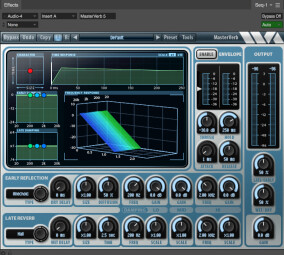In the last article, we discussed reverb time, which, in the end, corresponds more or less to the duration of the reverb tail. Today we'll take a look at what happens on the other side of the reverberation with the early reflections.
A good start
As the name implies, early reflections are the first reflections off the nearest walls. These reflections are crucial because they include information that’s indispensable for your brain to identify the size of the room (width, height and depth), as well as the distance to the sound source. This means that early reflections ought to be taken very seriously if you want to provide a realistic sense of space.
It’s not unusual for reverb plug-ins to feature a knob to adjust the level of these reflections ─ which is great! Especially, since the level of the early reflections is responsible for lots of things.
First of all, they inform the listener of the size of the room, but in a somewhat counterintuitive way. The larger the room, the softer the early reflections! Why? Well quite simply because sound reflecting off a distant wall will take longer to get back to your ears than if it had rebounded on a wall next to you.
Furthermore, the level of these reflections also provides information about the materials of the room. For example, a tiled kitchen will obviously produce louder early reflections than a tapestried room.
Finally, when it comes to distance, the level of the early reflections is once again very indicative, although in what might seem an unnatural manner: The farther a sound source is from the listener, the smaller the difference between the source signal and the first reflections, in terms of relative volume. Hence, to make an instrument seem farther away, you should reduce its level and increase the reverb’s early reflections level.
Just one final remark before closing this section. These early reflections can easily alter the timbre of an instrument because they are the closest sounds to the source signal, which can result in comb filtering. If you notice this happening, you have several ways of tackling the issue. You could try playing with the pre-delay to “push them away” from the source signal, although this may not suit your idea of where the signal ought to be placed in the sound field. You can also reduce their level or completely remove them, which will result in the signal not being precisely located and the reverb losing some of its natural feel. Finally, you could try to minimize the issue by EQing the reverberated signal. Which is something that comes just at the right moment, considering that in the next article we’ll talk about equalization in a reverberant medium. So, join me next week to resume our adventure into the art of mixing!



